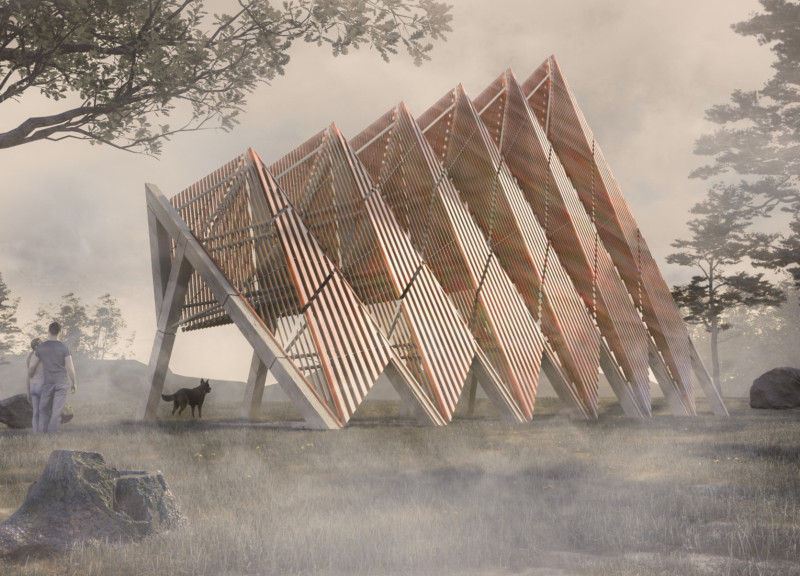5 key facts about this project
The architectural design focuses on harmony between the structure and its environment, creating a building that is not only visually appealing but also functional and sustainable. The pavilion's form is characterized by an undulating roof that adds visual interest and defines the overall character of the structure. This roof design, with its varying heights and angles, integrates seamlessly into the natural topography, enhancing the connection between the architecture and the landscape.
Key elements of the pavilion include the use of a timber frame, which provides structural integrity while also reflecting a commitment to sustainable building practices. The materials chosen for the project are primarily sourced from local timber, emphasizing a reduced carbon footprint and supporting local economies. The timber flooring offers durability, while the soffit bracing enhances both stability and acoustic comfort within the space. The inclusion of timber slatted and fagged louvres plays a dual role by optimizing the natural light flow and regulating temperature, thereby creating a comfortable environment for occupants.
Moreover, the open-plan layout invites users to engage with the space creatively, promoting interaction and social connectivity. By accommodating a variety of functions, from informal meetings to artistic performances, the Timber Pavilion serves as a versatile hub for the community. Its design thoughtfully incorporates natural elements, such as earth mounds and surrounding vegetation, providing an inviting atmosphere that encourages exploration and interaction with nature.
A unique approach in this architectural design is the emphasis on adaptability. The pavilion can easily transition between different uses, accommodating various group sizes and activities. This flexibility is enhanced by the thoughtful arrangement of space and the strategic placement of furnishings that complement the architectural design while maintaining functionality.
In addition to its aesthetic and functional qualities, the Timber Pavilion stands as a testament to contemporary architectural ideas. It embodies a philosophy that values sustainability and user experience, merging modern materials with traditional craftsmanship. The dialogue established between structure and site promotes a sense of belonging and creates a backdrop for community interactions. The project exemplifies how architecture can enhance the livability of spaces while respecting the environment.
For those interested in a more comprehensive understanding of this architectural endeavor, further exploration of the project presentation is encouraged. Delving into the architectural plans, architectural sections, and detailed architectural designs could provide deeper insights into the innovative ideas that define this remarkable project. It is a worthwhile opportunity to fully appreciate the design and the thoughtful considerations that contributed to its realization.























